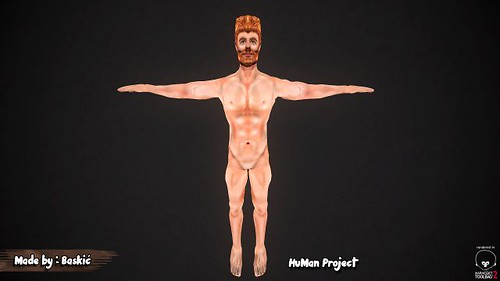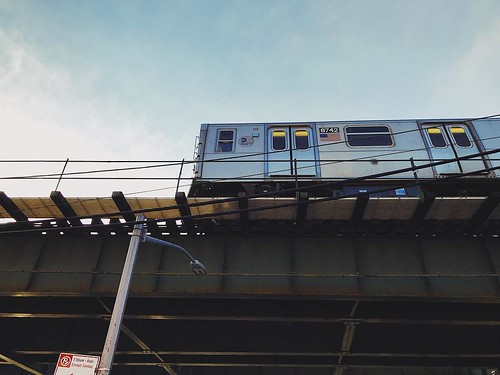Ysis by Sanger sequencing and pyrosequencing-based assay U-BRAFV600. (a) Sanger sequencing; (b) pyrosequencing-based assay U-BRAFV600. “+” indicates the positive peaks of the dispensation nucleotides within recognition patterns of MedChemExpress CI-1011 U-BRAFV600 assay. mt ?mutant; wt ?wild-type. Recognition patterns are  shown in black boxes. doi:10.1371/journal.pone.0059221.gamplified using forward primer U-BRAF-F and biotinylated reverse primer BRAF-Pyro-R (Eurofins MWG Operon, Table S1 in File S1). Each PCR reaction mixture was prepared with 2?10 ng genomic DNA, 5 pmol each primer, 2.5 mM dNTPs and 1 unit PhusionTM polymerase (Biozym) in a total volume of 50 ml. Amplification of 12926553 BRAF fragment was performed in a PCR Fexinidazole cycler Flexcycler (Analytik Jena) as follows: 98uC for 1 minute, 35 cycles of 98uC for 10 seconds, 56uC for 20 seconds and 72uC for 20 seconds, followed by final extension at 72uC for 10 minutes. Specific amplification of the 229-bp fragment was verified by visualizing 5 ml PCR product on a 2 agarose TBE gel using SubCell electrophoresis unit (Bio-RAD), followed by 30-minute incubation in 1x GelRed solution (Biotium). Pyrosequencing procedure was performed identifying variant mutations either at codons V600 to S602 (59-AGTGAAATCT-39) with sequencing primer U-BRAF-600-Seq or at codons T599 to S602 (59-TACAGTGAAATCT-39) with sequencing primer UBRAF-599-Seq (Eurofins MWG, Table S1 in File S1). 20 ml PCR product (400?00 ng) were used for pyrosequencing according to manufacturer’s instructions (Pyromark Q24, Qiagen). Sequence pyrograms were automatically analyzed using simple operators of a spreadsheet application.Sanger SequencingSanger sequencing was performed bidirectionally with 1 ml PCR product amplified for pyrosequencing as described above, using BRAF-15F-Seq and BRAF-15R-Seq (Eurofins MWG Operon, Table S1 in File S1) with Big Dye Terminator V1.1 cycle sequencing reagents
shown in black boxes. doi:10.1371/journal.pone.0059221.gamplified using forward primer U-BRAF-F and biotinylated reverse primer BRAF-Pyro-R (Eurofins MWG Operon, Table S1 in File S1). Each PCR reaction mixture was prepared with 2?10 ng genomic DNA, 5 pmol each primer, 2.5 mM dNTPs and 1 unit PhusionTM polymerase (Biozym) in a total volume of 50 ml. Amplification of 12926553 BRAF fragment was performed in a PCR Fexinidazole cycler Flexcycler (Analytik Jena) as follows: 98uC for 1 minute, 35 cycles of 98uC for 10 seconds, 56uC for 20 seconds and 72uC for 20 seconds, followed by final extension at 72uC for 10 minutes. Specific amplification of the 229-bp fragment was verified by visualizing 5 ml PCR product on a 2 agarose TBE gel using SubCell electrophoresis unit (Bio-RAD), followed by 30-minute incubation in 1x GelRed solution (Biotium). Pyrosequencing procedure was performed identifying variant mutations either at codons V600 to S602 (59-AGTGAAATCT-39) with sequencing primer U-BRAF-600-Seq or at codons T599 to S602 (59-TACAGTGAAATCT-39) with sequencing primer UBRAF-599-Seq (Eurofins MWG, Table S1 in File S1). 20 ml PCR product (400?00 ng) were used for pyrosequencing according to manufacturer’s instructions (Pyromark Q24, Qiagen). Sequence pyrograms were automatically analyzed using simple operators of a spreadsheet application.Sanger SequencingSanger sequencing was performed bidirectionally with 1 ml PCR product amplified for pyrosequencing as described above, using BRAF-15F-Seq and BRAF-15R-Seq (Eurofins MWG Operon, Table S1 in File S1) with Big Dye Terminator V1.1 cycle sequencing reagents  (Life Technologies) under the following PCR conditions: 25 cycles at 95uC for 20 seconds, 55uC for 15 seconds, and 60uC for 1 min. DNA sequences were finally determined on a 3500 Gene Analyzer (Life Technologies) and each sample was visually analyzed for the presence of mutation of braf within activation segment in exon 15.Cloning of BRAF Mutant VariantsSamples with p.V600E, p.V600E2, p.V600K, p.VKS600_602.DT or p.V600E;K601I mutations were amplified using U-BRAF-F and BRAF-Pyro-R as described above. After purification according to manufacturer’s instructions (QIAquick PCR Purification kit, Qiagen), the amplified products were incubated with 1 Unit Taq polymerase in the presence of 0.2 mM ATP for 30 min at 72uC. The purified PCR products were ligated into pSTBlue-1 vector, followed by transformation into XL1-Blue competent cells according to manufacturer’s instructions (AccepTorH Vector kit, Merck). The clones were selected by PCR amplification of a single colony using U-BRAF-F and biotinylated BRAF-Pyro-R (Table S1 in File S1). TheU-BRAFV600 State DetectionFigure 2. Low-abundance BRAF mutations. a) Pyrogram of cloned wild-type BRAF. Red arrow indicates the reduction of peak intensity values; b) pyrograms of cloned BRAF mutants. Red asterisks indicate the dispensation nucleotide’s peaks, which are characteristic for corresponding BRAF mutant in low-copy-number analysis; c) pyrograms of premixed BRAF mutants with wild type. Red arrows indicate the tendency of peak-pairs’ difference included in low-copy-number analysis. Red asterisks indicate the peaks with the contribution.Ysis by Sanger sequencing and pyrosequencing-based assay U-BRAFV600. (a) Sanger sequencing; (b) pyrosequencing-based assay U-BRAFV600. “+” indicates the positive peaks of the dispensation nucleotides within recognition patterns of U-BRAFV600 assay. mt ?mutant; wt ?wild-type. Recognition patterns are shown in black boxes. doi:10.1371/journal.pone.0059221.gamplified using forward primer U-BRAF-F and biotinylated reverse primer BRAF-Pyro-R (Eurofins MWG Operon, Table S1 in File S1). Each PCR reaction mixture was prepared with 2?10 ng genomic DNA, 5 pmol each primer, 2.5 mM dNTPs and 1 unit PhusionTM polymerase (Biozym) in a total volume of 50 ml. Amplification of 12926553 BRAF fragment was performed in a PCR cycler Flexcycler (Analytik Jena) as follows: 98uC for 1 minute, 35 cycles of 98uC for 10 seconds, 56uC for 20 seconds and 72uC for 20 seconds, followed by final extension at 72uC for 10 minutes. Specific amplification of the 229-bp fragment was verified by visualizing 5 ml PCR product on a 2 agarose TBE gel using SubCell electrophoresis unit (Bio-RAD), followed by 30-minute incubation in 1x GelRed solution (Biotium). Pyrosequencing procedure was performed identifying variant mutations either at codons V600 to S602 (59-AGTGAAATCT-39) with sequencing primer U-BRAF-600-Seq or at codons T599 to S602 (59-TACAGTGAAATCT-39) with sequencing primer UBRAF-599-Seq (Eurofins MWG, Table S1 in File S1). 20 ml PCR product (400?00 ng) were used for pyrosequencing according to manufacturer’s instructions (Pyromark Q24, Qiagen). Sequence pyrograms were automatically analyzed using simple operators of a spreadsheet application.Sanger SequencingSanger sequencing was performed bidirectionally with 1 ml PCR product amplified for pyrosequencing as described above, using BRAF-15F-Seq and BRAF-15R-Seq (Eurofins MWG Operon, Table S1 in File S1) with Big Dye Terminator V1.1 cycle sequencing reagents (Life Technologies) under the following PCR conditions: 25 cycles at 95uC for 20 seconds, 55uC for 15 seconds, and 60uC for 1 min. DNA sequences were finally determined on a 3500 Gene Analyzer (Life Technologies) and each sample was visually analyzed for the presence of mutation of braf within activation segment in exon 15.Cloning of BRAF Mutant VariantsSamples with p.V600E, p.V600E2, p.V600K, p.VKS600_602.DT or p.V600E;K601I mutations were amplified using U-BRAF-F and BRAF-Pyro-R as described above. After purification according to manufacturer’s instructions (QIAquick PCR Purification kit, Qiagen), the amplified products were incubated with 1 Unit Taq polymerase in the presence of 0.2 mM ATP for 30 min at 72uC. The purified PCR products were ligated into pSTBlue-1 vector, followed by transformation into XL1-Blue competent cells according to manufacturer’s instructions (AccepTorH Vector kit, Merck). The clones were selected by PCR amplification of a single colony using U-BRAF-F and biotinylated BRAF-Pyro-R (Table S1 in File S1). TheU-BRAFV600 State DetectionFigure 2. Low-abundance BRAF mutations. a) Pyrogram of cloned wild-type BRAF. Red arrow indicates the reduction of peak intensity values; b) pyrograms of cloned BRAF mutants. Red asterisks indicate the dispensation nucleotide’s peaks, which are characteristic for corresponding BRAF mutant in low-copy-number analysis; c) pyrograms of premixed BRAF mutants with wild type. Red arrows indicate the tendency of peak-pairs’ difference included in low-copy-number analysis. Red asterisks indicate the peaks with the contribution.
(Life Technologies) under the following PCR conditions: 25 cycles at 95uC for 20 seconds, 55uC for 15 seconds, and 60uC for 1 min. DNA sequences were finally determined on a 3500 Gene Analyzer (Life Technologies) and each sample was visually analyzed for the presence of mutation of braf within activation segment in exon 15.Cloning of BRAF Mutant VariantsSamples with p.V600E, p.V600E2, p.V600K, p.VKS600_602.DT or p.V600E;K601I mutations were amplified using U-BRAF-F and BRAF-Pyro-R as described above. After purification according to manufacturer’s instructions (QIAquick PCR Purification kit, Qiagen), the amplified products were incubated with 1 Unit Taq polymerase in the presence of 0.2 mM ATP for 30 min at 72uC. The purified PCR products were ligated into pSTBlue-1 vector, followed by transformation into XL1-Blue competent cells according to manufacturer’s instructions (AccepTorH Vector kit, Merck). The clones were selected by PCR amplification of a single colony using U-BRAF-F and biotinylated BRAF-Pyro-R (Table S1 in File S1). TheU-BRAFV600 State DetectionFigure 2. Low-abundance BRAF mutations. a) Pyrogram of cloned wild-type BRAF. Red arrow indicates the reduction of peak intensity values; b) pyrograms of cloned BRAF mutants. Red asterisks indicate the dispensation nucleotide’s peaks, which are characteristic for corresponding BRAF mutant in low-copy-number analysis; c) pyrograms of premixed BRAF mutants with wild type. Red arrows indicate the tendency of peak-pairs’ difference included in low-copy-number analysis. Red asterisks indicate the peaks with the contribution.Ysis by Sanger sequencing and pyrosequencing-based assay U-BRAFV600. (a) Sanger sequencing; (b) pyrosequencing-based assay U-BRAFV600. “+” indicates the positive peaks of the dispensation nucleotides within recognition patterns of U-BRAFV600 assay. mt ?mutant; wt ?wild-type. Recognition patterns are shown in black boxes. doi:10.1371/journal.pone.0059221.gamplified using forward primer U-BRAF-F and biotinylated reverse primer BRAF-Pyro-R (Eurofins MWG Operon, Table S1 in File S1). Each PCR reaction mixture was prepared with 2?10 ng genomic DNA, 5 pmol each primer, 2.5 mM dNTPs and 1 unit PhusionTM polymerase (Biozym) in a total volume of 50 ml. Amplification of 12926553 BRAF fragment was performed in a PCR cycler Flexcycler (Analytik Jena) as follows: 98uC for 1 minute, 35 cycles of 98uC for 10 seconds, 56uC for 20 seconds and 72uC for 20 seconds, followed by final extension at 72uC for 10 minutes. Specific amplification of the 229-bp fragment was verified by visualizing 5 ml PCR product on a 2 agarose TBE gel using SubCell electrophoresis unit (Bio-RAD), followed by 30-minute incubation in 1x GelRed solution (Biotium). Pyrosequencing procedure was performed identifying variant mutations either at codons V600 to S602 (59-AGTGAAATCT-39) with sequencing primer U-BRAF-600-Seq or at codons T599 to S602 (59-TACAGTGAAATCT-39) with sequencing primer UBRAF-599-Seq (Eurofins MWG, Table S1 in File S1). 20 ml PCR product (400?00 ng) were used for pyrosequencing according to manufacturer’s instructions (Pyromark Q24, Qiagen). Sequence pyrograms were automatically analyzed using simple operators of a spreadsheet application.Sanger SequencingSanger sequencing was performed bidirectionally with 1 ml PCR product amplified for pyrosequencing as described above, using BRAF-15F-Seq and BRAF-15R-Seq (Eurofins MWG Operon, Table S1 in File S1) with Big Dye Terminator V1.1 cycle sequencing reagents (Life Technologies) under the following PCR conditions: 25 cycles at 95uC for 20 seconds, 55uC for 15 seconds, and 60uC for 1 min. DNA sequences were finally determined on a 3500 Gene Analyzer (Life Technologies) and each sample was visually analyzed for the presence of mutation of braf within activation segment in exon 15.Cloning of BRAF Mutant VariantsSamples with p.V600E, p.V600E2, p.V600K, p.VKS600_602.DT or p.V600E;K601I mutations were amplified using U-BRAF-F and BRAF-Pyro-R as described above. After purification according to manufacturer’s instructions (QIAquick PCR Purification kit, Qiagen), the amplified products were incubated with 1 Unit Taq polymerase in the presence of 0.2 mM ATP for 30 min at 72uC. The purified PCR products were ligated into pSTBlue-1 vector, followed by transformation into XL1-Blue competent cells according to manufacturer’s instructions (AccepTorH Vector kit, Merck). The clones were selected by PCR amplification of a single colony using U-BRAF-F and biotinylated BRAF-Pyro-R (Table S1 in File S1). TheU-BRAFV600 State DetectionFigure 2. Low-abundance BRAF mutations. a) Pyrogram of cloned wild-type BRAF. Red arrow indicates the reduction of peak intensity values; b) pyrograms of cloned BRAF mutants. Red asterisks indicate the dispensation nucleotide’s peaks, which are characteristic for corresponding BRAF mutant in low-copy-number analysis; c) pyrograms of premixed BRAF mutants with wild type. Red arrows indicate the tendency of peak-pairs’ difference included in low-copy-number analysis. Red asterisks indicate the peaks with the contribution.
